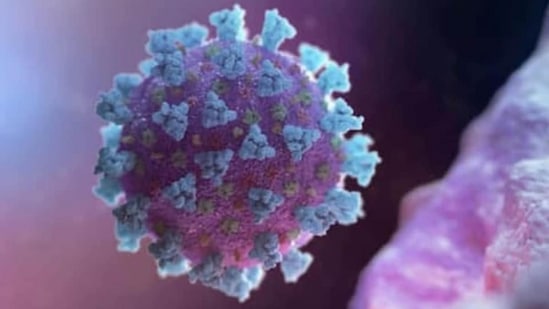Environment must drive a national action plan on AMR 2.0
The article has been authored by Pradyut Bordoloi, MP, Lok Sabha (INC)
The pandemic has highlighted the importance of preserving the relationship between people and nature, given the intrinsic linkages between human health and biodiversity. While Covid-19, a zoonotic disease, overwhelmed the global public health systems due to its high transmissibility, other zoonotic diseases such as Ebola and Middle East Respiratory Syndrome (MERS) severely affected local public health systems. Public health experts fear that the rate of emergence of new zoonotic diseases may accelerate in the future, some of which may even assume pandemic proportions. Loss of habitat by deforestation, urbanization, and pollution of water bodies and soil are among the several drivers that may catalyze the next public health crisis, particularly through phenomena such as Antimicrobial Resistance (AMR).

Categorised amongst the top 10 threats to public health, AMR occurs when microorganisms acquire the ability to resist the action of antimicrobial agents, thus making it harder to treat infections and increasing the risk of disease. As an evolving public health challenge, it threatens both the prevention and treatment of an increasing range of diseases, whether caused by bacteria, parasites, viruses, or fungi. AMR arises from overuse of medications like antibiotics in humans, misuse of drugs to boost growth in the livestock sector, and the unregulated release of pharmaceutical and chemical effluents into water bodies and soil. An unchecked increase in AMR can have disastrous consequences on public health systems as drugs would begin to lose their efficacy. Already in 2019, over one million mortalities were directly linked to AMR.
To mitigate and manage AMR, global and national action plans have been guided by the One Health approach, an integrated and unifying strategy to achieve a sustainable balance between various ecosystems. This approach recognises the interconnectedness between ecosystems and encourages collaborative actions to optimise animal, human and environmental health. Among recent efforts, there has been an increased impetus to understand and address the various drivers of AMR in the environment and to promote the One Health approach as a guiding framework while developing national responses to AMR. Moreover, in March of this year, the tripartite for One Health, comprised of the Food and Agriculture Organization (FAO), the World Health Organization (WHO), and the World Organization for Animal Health (OIE) expanded with the inclusion of the United Nations Environment Programme (UNEP). This global movement signals national policymakers the need to emphasise the mitigation of environmental AMR, especially in low- and middle-income countries (LMIC) like India, where along with animal and human drivers, environmental degradation of soil and water bodies poses a challenge for AMR mitigation.
During the first five years of India's National Action Plan on AMR (NAP-AMR), curtailment of AMR in the animal and human ecosystems has received strong policy impetus by initiatives such as the Red Line Campaign, the ban on the usage of streptomycin, and tetracycline in agriculture, and colistin in poultry and livestock. However, as the NAP-AMR completes its fifth year in 2022, the lack of action to limit environmental AMR is worrying.
Given the expanse of the Indian pharmaceutical industry and healthcare industry, a framework that limits the levels of antibiotic residues in the waste waters of pharmaceutical manufacturing units and healthcare facilities is the need of the hour. While the ministry of environment did release a draft notification in January 2020, prescribing the maximum threshold of antibiotics in effluents, the notification has since lapsed. The wide-scale presence of Active Pharmaceutical Ingredients (APIs or biologically active drugs) in Indian rivers Sirsa, Yamuna, and Cauvery has frequently been reported across the country. Additionally, a recent study found Hyderabad's Musi River to be the 22nd most polluted river in the world, the water of which contained various APIs thereby posing a serious public health risk.
Beyond the implementation of guidelines to limit the pharmaceutical contamination of rivers, a conducive research environment must be promoted to develop innovative tech solutions for monitoring contaminants in wastewater. Researchers of IIT Madras and IIT Kanpur have already made some headway in this regard. Further, the Government can partner with stakeholders and organisations to promote innovative solution-finding through initiatives such as hackathons. Such efforts could lead to innovative solutions for effectively managing wastewaters from healthcare facilities, farms, and factories. Additionally, the coverage of the Indian Council of Medical Research’s AMR Surveillance Network (ICMR-AMRSN) must be expanded to capture the spread and emergence of AMR in the different parts of the country. For instance, the AMRSN currently has a very limited presence in the Northeast region. This can impede the region’s progress on health goals as the estimation of the AMRSN may not be representative of the actual AMR situation in the region.
AMR is everybody's problem. Cross-sectoral, collective action is fundamental to addressing this pressing yet complex issue. The second iteration of the NAP-AMR is an opportunity for the government to strengthen the public health system against future health crises. Against the backdrop of the emergence of zoonotic diseases and India's already heavy burden of communicable diseases, a rise in AMR is a mounting public health challenge. Considering that the environment serves as a major reservoir and pathway for the dissemination of AMR, on account of human exposure through consumption of food and water, our efforts must be geared towards limiting drivers of environmental AMR. It is imperative that the NAP-AMR 2.0 not only builds on the progress of the last five years but also lays renewed emphasis on the environmental dimension of AMR.
[The article has been authored by Pradyut Bordoloi, MP, Lok Sabha (INC)]
All Access.
One Subscription.
Get 360° coverage—from daily headlines
to 100 year archives.



HT App & Website







